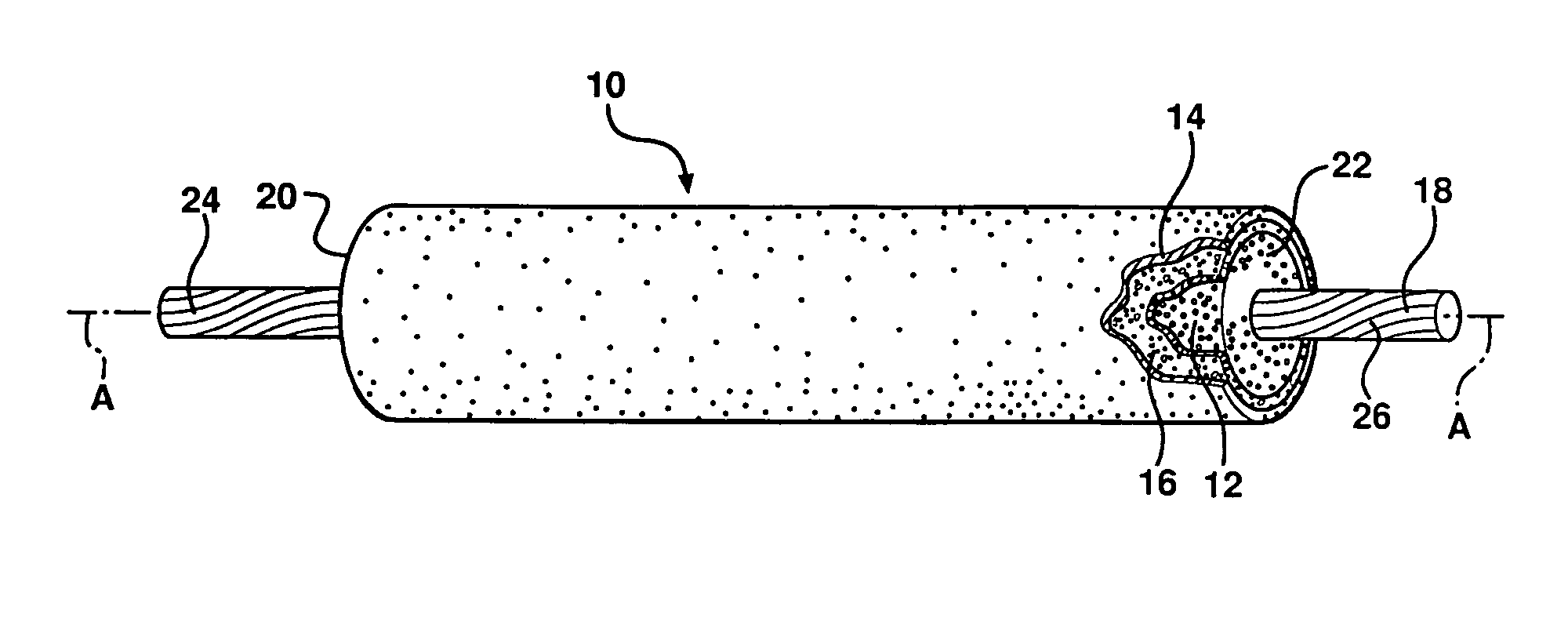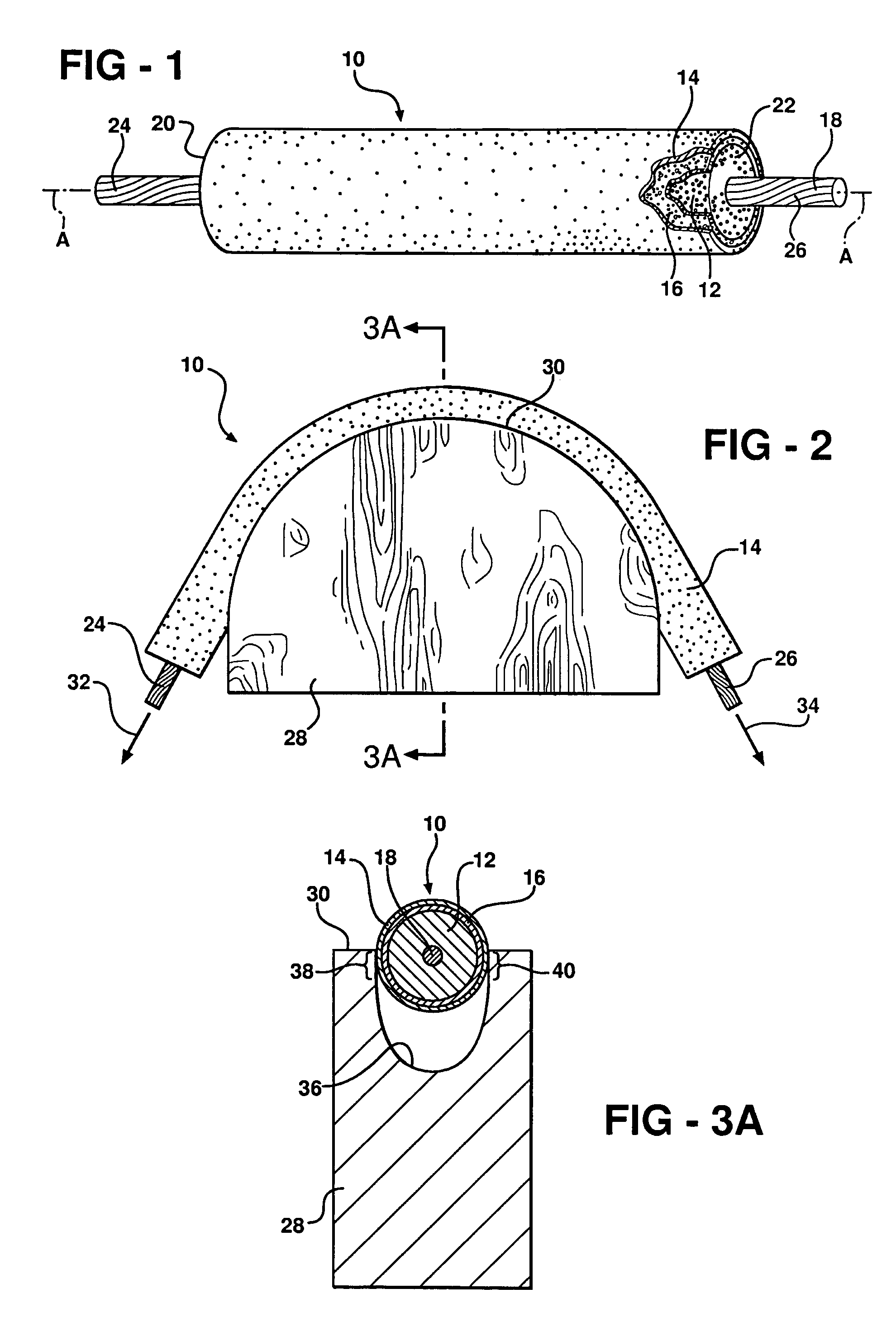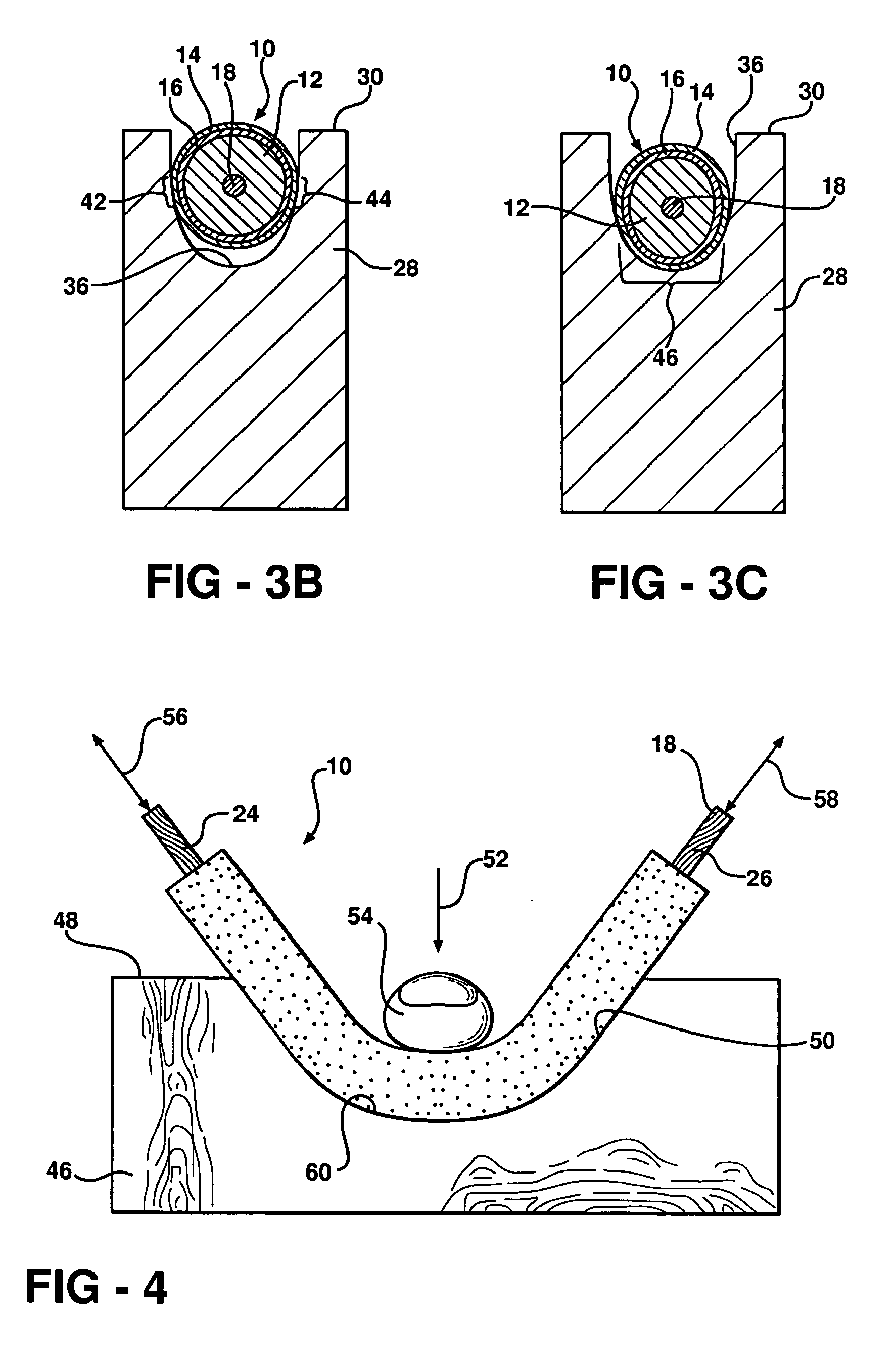Sanding rope and method of forming same
a technology of sanding rope and sanding rod, which is applied in the direction of edge grinding machines, chemistry apparatuses and processes, manufacturing tools, etc., can solve the problems of inconvenient installation or wrapping of a separate piece of sandpaper around the device, insufficient firm pressure to complete the job, and insufficient pressure to achieve efficient use of sandpaper, etc., to achieve low cost, low cost, and constant cross-section
- Summary
- Abstract
- Description
- Claims
- Application Information
AI Technical Summary
Benefits of technology
Problems solved by technology
Method used
Image
Examples
Embodiment Construction
[0033]FIG. 1 illustrates a preferred embodiment of the present invention. A disposable sanding rope or device 10 is formed as a generally rod shaped base portion 12 elongated along an axis designated A-A. Base portion 12 is preferably formed from lightweight resilient material such as closed cell foam or rubber. It is contemplated that many other suitable materials such as urethane or neoprene could be substituted, however, based upon an understanding of the present invention and a given specific application.
[0034] The outer circumferential surface of base portion 12 is substantially covered with an abrasive coating layer 14 suitably affixed to the underlying base portion 12 by an intermediate adhesive layer 16. Adhesive layer 16 is spray applied to base portion 12 prior to application of a suitable aggregate abrasive 14 such as coarse aluminum oxide or silicon carbide. Such materials are commercially available from the Household and Hardware Products Division of the 3M Company und...
PUM
 Login to View More
Login to View More Abstract
Description
Claims
Application Information
 Login to View More
Login to View More - R&D
- Intellectual Property
- Life Sciences
- Materials
- Tech Scout
- Unparalleled Data Quality
- Higher Quality Content
- 60% Fewer Hallucinations
Browse by: Latest US Patents, China's latest patents, Technical Efficacy Thesaurus, Application Domain, Technology Topic, Popular Technical Reports.
© 2025 PatSnap. All rights reserved.Legal|Privacy policy|Modern Slavery Act Transparency Statement|Sitemap|About US| Contact US: help@patsnap.com



